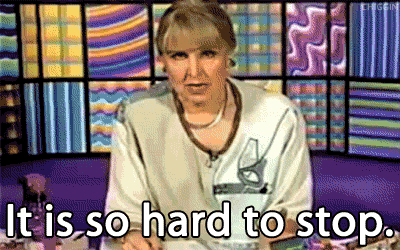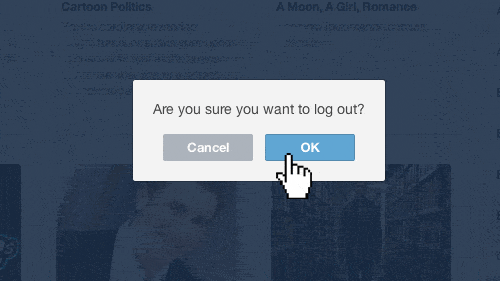Digital communication via the main social networks plays an important role in our society. Why and how? What are the impact of social networks on our lives? Is it inevitable?
When we talk about addiction, we first think of the more traditional substances and drugs, such as heroin, cocaine, alcohol, etc.
However, addiction to social networks is increasingly associated with the term “addiction“. Is it necessary to repeat the phenomenal figures for social media?
The top 4 have over a billion users each. ?
Social network traffic
Before looking in detail at how these new tools influence our lives and the way we interact, let me just go back to the scale of the phenomenon.
Without even mentioning the impact of networking on private life, the interaction that social networks allow, as well as the visibility and e-reputation that they bring, make them absolutely essential tools in web marketing. According to Effilab, 93% of advertisers use Facebook advertising, in particular to build customer loyalty and convert a greater number of prospects. 41% of Twitter users would have bought a product within 30 days of viewing an ad on the platform.

The social network is therefore becoming an increasingly important means of attracting consumers… And it works.
Addiction to social networks at any age
In addition to the incredible impact of social networks on digital marketing, they are, of course, deeply rooted in the way we live. Don’t be fooled into thinking that communicating on social networks is the preserve of teenagers, 45% of whom say they are connected almost all the time. 50% of LinkedIn users are between 30 and 49 years old, and no less than 88% of 18-29 year olds use social media.

Among 18-24 year olds, 51% say they would find it difficult to get away from social media.
That’s a sobering thought! And this, while Facebook will celebrate its 15th anniversary at the beginning of February… It’s not getting any younger! ?
With this point made, let’s now go into more detail about the consequences of the virtual on everyday life.
Social networking addiction: a new addiction?
The main consequence of this exponential growth of social networks is obviously the addiction it creates among users. Whether it is an “addiction” in the medical sense of the word or not, it does not change the fact that feeding one’s Facebook profile or Twitter account all day long can quickly take on insane dimensions.
According to statista, in 2022, the average daily social media usage of internet users worldwide amounted to 147 minutes per day, up from 145 minutes in the previous year.

This dependence is particularly evident in the proliferation of instant messaging. After having made the good days of MSN, it is coming back with a vengeance on many social networks. This is relevant when you consider the literal meaning of the expression “social network”. Unfortunately, in the family of potentially addictive elements, instant messaging is right up there. It is easy to talk about everything, but especially about nothing, for hours on end, without even realising it…
Fear of missing out
The success of social networks can also be explained by the “Fomo” syndrome, which stands for “Fear of missing out”. In other words, the fear of missing out. Because of the instantaneous nature of the publications and the ease with which they can be set up, there is always something happening on the social networks.
We quickly become addicted to this race for novelty, eager to discover the latest meal from so-and-so, or the commentary on the latest film seen by Aunt Machine. This fear of missing out on the news leads to constantly coming back to the social networks to keep up with everything.

If you are a creator or influencer who uses the virality of social networks to develop your notoriety and reputation, the dependence is also extreme. Interacting with your followers is so much easier and faster than good old-fashioned blogging… So you are always encouraged to come back to read the comments on your latest tweet, publication or YouTube video.
The dark side of social networks
Even if social networks have positive contributions, it is healthy to point out these dark areas as well, so as not to “let the apple rot”.
In addition to this dependence on multiple factors (easy friendship with strangers, the possibility of becoming someone else on the net, the need for recognition), the social networks are not without other, more deplorable excesses. These include cybercrime (e.g. data theft and identity theft), cyber-bullying and the havoc it wreaks in schools, and the advent of fake news, or how to create sterile controversy out of… nothing at all.

Are we therefore condemned to see the social networks take control of our lives? Fortunately not!
How to detach yourself from social networks
Step 1: Make your assessment
Before you really try to cut down on your use, you need to objectively measure the extent of your potential addiction. Try to keep track of the amount of time you spend on the social networks, and average it out.
Based on this figure, set yourself a realistic goal: how much time do you really want to spend on your digital life?
Knowing how much time you spend online now, and where you’re headed, will be very useful in changing your habits.

Reducing the presence of social networks technically
As for concrete measures, you can use extensions and tools that limit or block your access to social networks. This can be permanently, on certain days or at certain times. Once you have taken the trouble to set up your accesses, you will know that there is no point in running to your computer every 10 minutes: you will not be able to access your accounts if it is not yet time.
A tip that is so simple that you don’t think about it at all: log out. Not in a graphic way, but literally, click on the “Log out” button. This way, you can come back and refresh the page in 7 minutes 38 seconds, as you do every time, but you won’t see the latest posts and news from your friends and family, and you won’t fall into the spiral of perpetual connection.

You can also deactivate all or part of the notifications from your social networks. Not to mention those on your phone! This way you won’t have an excuse to go back to the computer or the Internet (even if your cousin has just posted a new video chat).
Reducing the presence of social networks mentally
Finally, you can put things in perspective and try to reason with yourself. Do you really need to jump on all your accounts as soon as you get out of bed? Take the time to wake up slowly, and enjoy a good breakfast, before doing a little networking.
Once you’ve done that, there’s no need to come back in 15 minutes. You may as well not go back for another hour or two, or even just during your lunch break. The world will continue to spin without you, and you’ll have more fun and things to discover when you come back online.
A great solution: schedule your publications!
Like anything else, it is when social media is consumed in excess that the problem arises. When you are aware of the situation, you can find tips and ideas to limit your time on the social networks, and thus devote it to perhaps more important and diversified things.
In this respect, the possibility of scheduling your social network publications in detail and in advance is an excellent solution. From the content creator’s side, it allows you to organise all your posts in a precise and anticipated manner. You never lose visibility.
No need to rack your brains every day. You don’t have to go to the media, wondering what you’re going to publish and when. Without wanting to name it and totally at random ?, Swello is a great tool for that.
It allows you to optimize your webmarketing strategy, while saving a lot of time… Time that you won’t spend on social networks!



